Field ID: Thekla versus Crested Lark
Larks constitute a Family of birds normally living in open countryside with most of the species related to dry lands, grasslands and semi-arid countryside. Africa is the continent with the higher number of species of Larks, with a wide variety of them also living in Asia, Australia and Europe. Only a reduced number of Larks are present in the Nearctic.
Since most of Laks are adapted to live in semi-arid countryside, they are mostly terrestrial and normally have brown upperparts, often with stripes in both the upper side and the underside.
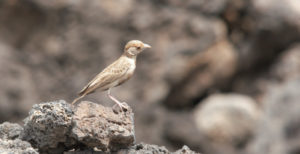
It is because of this that Larks are often seen as one of the most difficult groups of passerines for many birdwatchers. In Europe, probably one of the most trikky species to tell apart are Thekla & Crested Larks. Even local birdwatchers with a long experience in the field, show evident problems to tell these two species apart from each other.
Here we will try to help a bit in this sense, remarking some interesting differences between both species.
Many, many field guides remark some general differences between Thekla & Crested Lark. Some of the most important field marks to point out a Thekla Lark from a Crested are its shorter crest, and its rather shorter, heavier bill. Well, despite these remarks can be useful in many cases, we should not try to identify these species only based on the length of the bill or the crest. This is not only because of young Crested Larks tend to show shorter bills and crests, but also because of intraspecific differences in the length of the bill inside the same species, gender differences and also because appreciation of these characters in the field can be difficult depending on the light, the distance to the bird and the angle of observation.
In the next lines we will try to point out some interesting tools for a correct field identification of the European races of these species:
COLORATION & STRUCTURE,
The general coloration of Thekla Lark is grey to dark brown, while Crested Larks are normally close to be sandy colorated. Always being light brown. Structurally, Thekla Lark is slightly smaller, but also more compact and shorter tailed than Crested Larks are. Its winds are also shorter, and the general sensation of the bird when flushed out is of a “large Woodlark”. Crested Lark shows longer “hands”, and the sensation of the bird in flight is “diffuse”. Still, these differences can be difficult to notice in the field when not used to dealing with Larks.
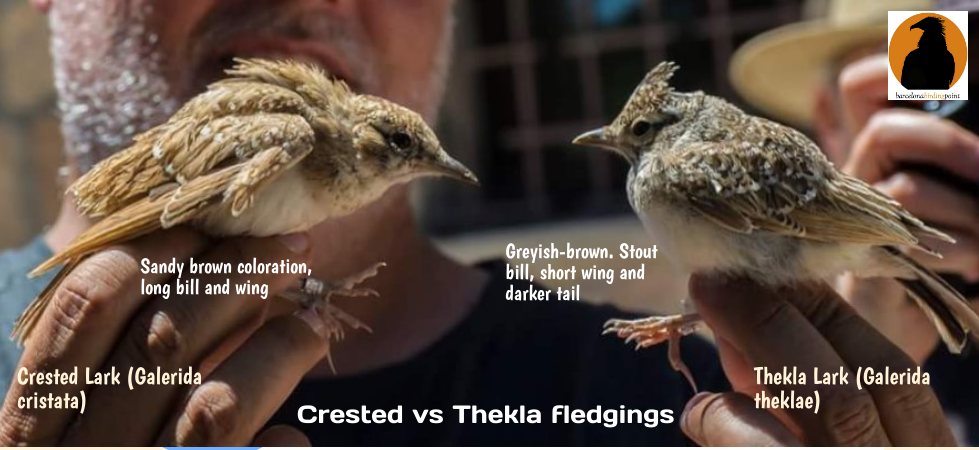
UNDERWING,
Underwing is one of the most useful remarks to tell apart both species. Crested Larks always show creamy, brownish underwing while Thekla Lark shows whitish underwing covers. This is useful in all plomages and all ages, at least for the European races of both species.
BREAST MARKINGS,
The most useful remarks to identify correctly these species in the field are, by far, the facial and breast markings. About the breast, Crested Larks show a fine streaked, and this delicate pattern clearly expands to the flanks in all plomages. The markings have a diffuse end in the breast. Compared with those in Cresteds, breast markings in Thekla Larks appear heavy, being more a dropping than a barring. In fact, many people compare the breast pattern of these two species with that in Eurasian Sparrowhawk versus Northern Goshawks, being Crested Lark the closer to the fine streaked Sparrowhawk, and Thekla Lark the one with heavy dropping resembling Northern Goshawk. Moreover, breast markings in Thekla Larks show an abrupt end, and you easily can draw an imaginary line that separates the markings from the really white belly. This is not possible to do with Crested Larks since their diffuse barring does not show a clear border. Its extension to the flank makes this even more evident.
FACIAL MARKINGS,
One of the things we must think about when dealing with these species is to pair attention to the facial markings. Thekla Lark presents a really complex facial pattern if compared with those in Crested Lark. Thus, Thekla shows evident complete eye-ring; a well defined, long supercilium that; almost complete malar stripe and a even (but not always), with some barring in the ear covers (unstreaked in Crested), and a white dot just behind the submoustachial stripe. Most of these patterns are absent or are really diffuse in Crested Larks. Most Crested Larks show a supercilium, but are also not well defined and barely extend beyond the eye.
When looking at the head of a Thekla Lark, all of this produces the sensation of treasuring a lot of information, and thus it contrasts a lot with the head of a Crested Lark, giving the sensation of emptiness or lack of information.
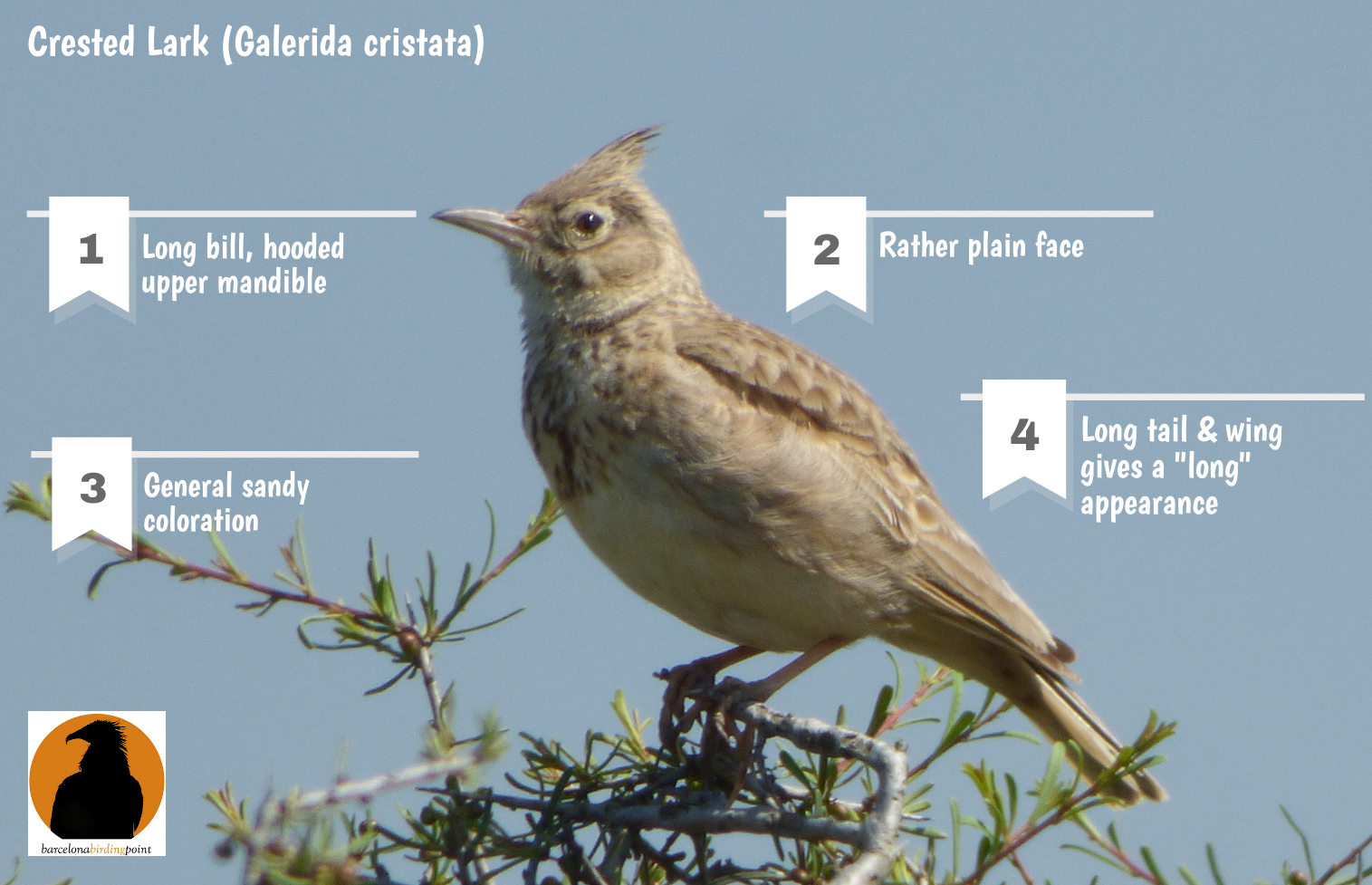
BILL,
Crested Lark shows a longer, thinner bill than Thekla Lark, with a noticeable hooked tip in the upper mandible. Be aware about young Crested Larks, that often show shorter bills. A close view with good light in a Crested Lark, it should be possible to see the darker tip of the bill (absent in Thekla Lark).
TAIL,
Thekla Lark’s tail is slightly shorter than Crested’s. Regarding ringing bibliography, tails in Thekla Lark males rank from 54 to 62mm, while in Crested Larks go from 59 to 69mm. This difference links perfectly with what was explained about the structure of both species, as Thekla Larks is clearly more compact in flight, and can recall a much shorter tailed species. The longer tail in Crested Larks tends to make this species somehow bigger.
But beyond the length, tail coloration can be also a good point to tell these species apart. Again Thekla Lark shows a more contrasted pattern, with brown to orangish outer tail feathers and upper-tail coverts. The tail also shows a strong contrast between these feathers and two blackish central bands. All of this is again reproduced in Crested Larks, but they lack the rusty tinge in the upper-tail covers. Moreover, the contrast between the outer feathers and the inner bands is poor, and in many worm birds it tends to disappear!
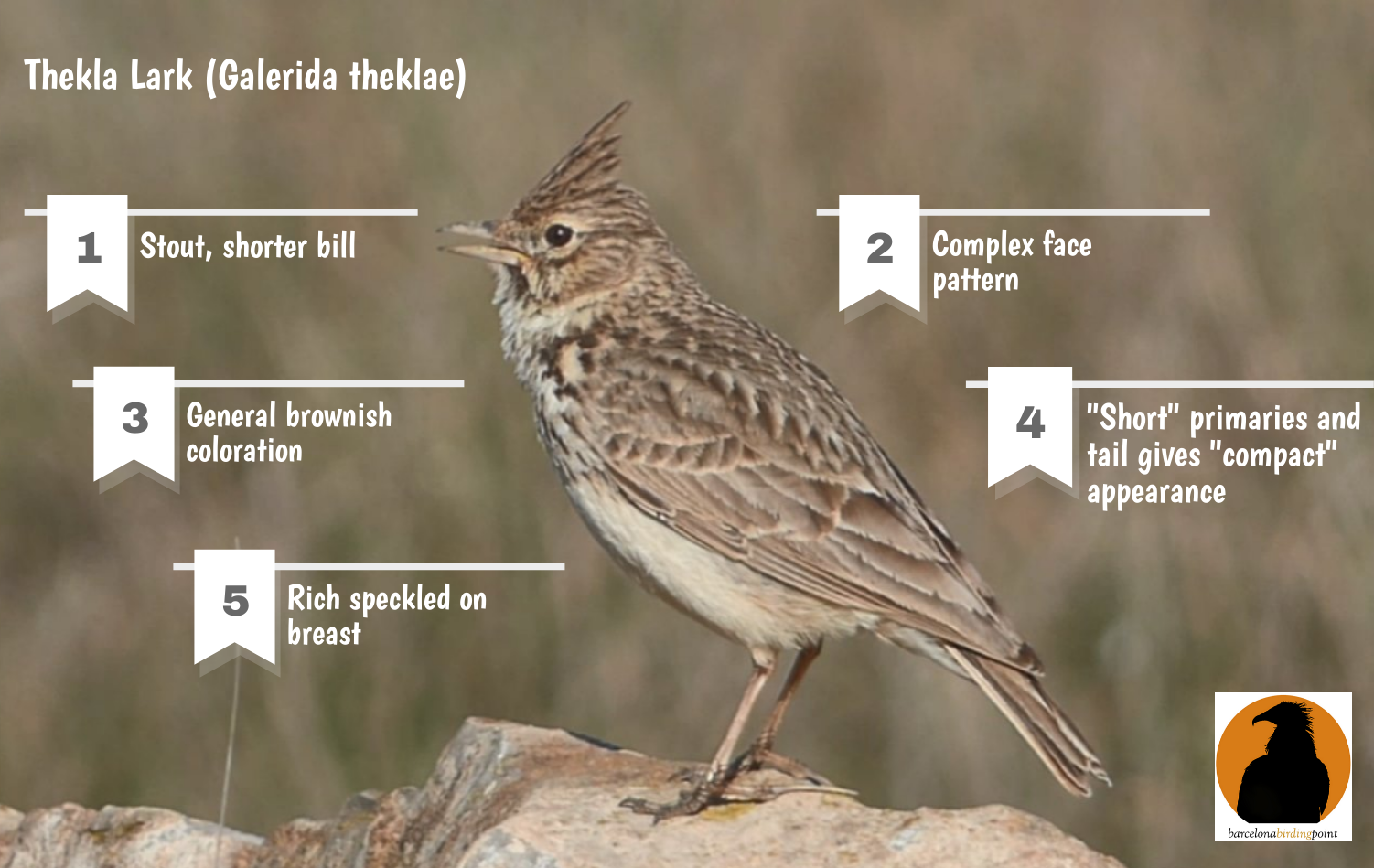
HABITAT SELECTION,
In Europe, these two species coexist in Mediterranean areas, and many times we can find them in areas with a large fragmentation of habitat as a result of human activity or environmental factors. Thus, we often find both species living side by side whether because their habitats are mixed or because they touch each other. But even if in most cases we cannot trust only in habitat selection to identify these birds, is still a useful tool that can help us in the fields.
- Thekla Lark is a specialist that can be only found in areas of natural steppe and semi-desert vegetation. The bird can be found in plains and ondulations as long covered by natural steppe or semi-desert vegetation. In addition, Thekla Lark is also found in hillsides with low scrubby vegetation (even if it is quite dense) with some sparse trees.
- Crested Lark is a generalist species. It has successfully adapted to live in farming areas, but also in periurban and industrial soils, where they find excellent conditions based on bare soils. Crested Lark tends to avoid any hills or mountains, but in low densities can be found in small patches of proper habitat inside hilly areas (even tiny farmed valleys inside a large hilly area can support some Crested Larks).
As many hillsides and steppe areas are just surrounded by farming areas, both species can be detected in several locations almost at the same time. Moreover, Thekla Larks living in hillsides with dense scrubs, may use the surrounding farm lands to feed, even if they keep using the hillsides to nest.
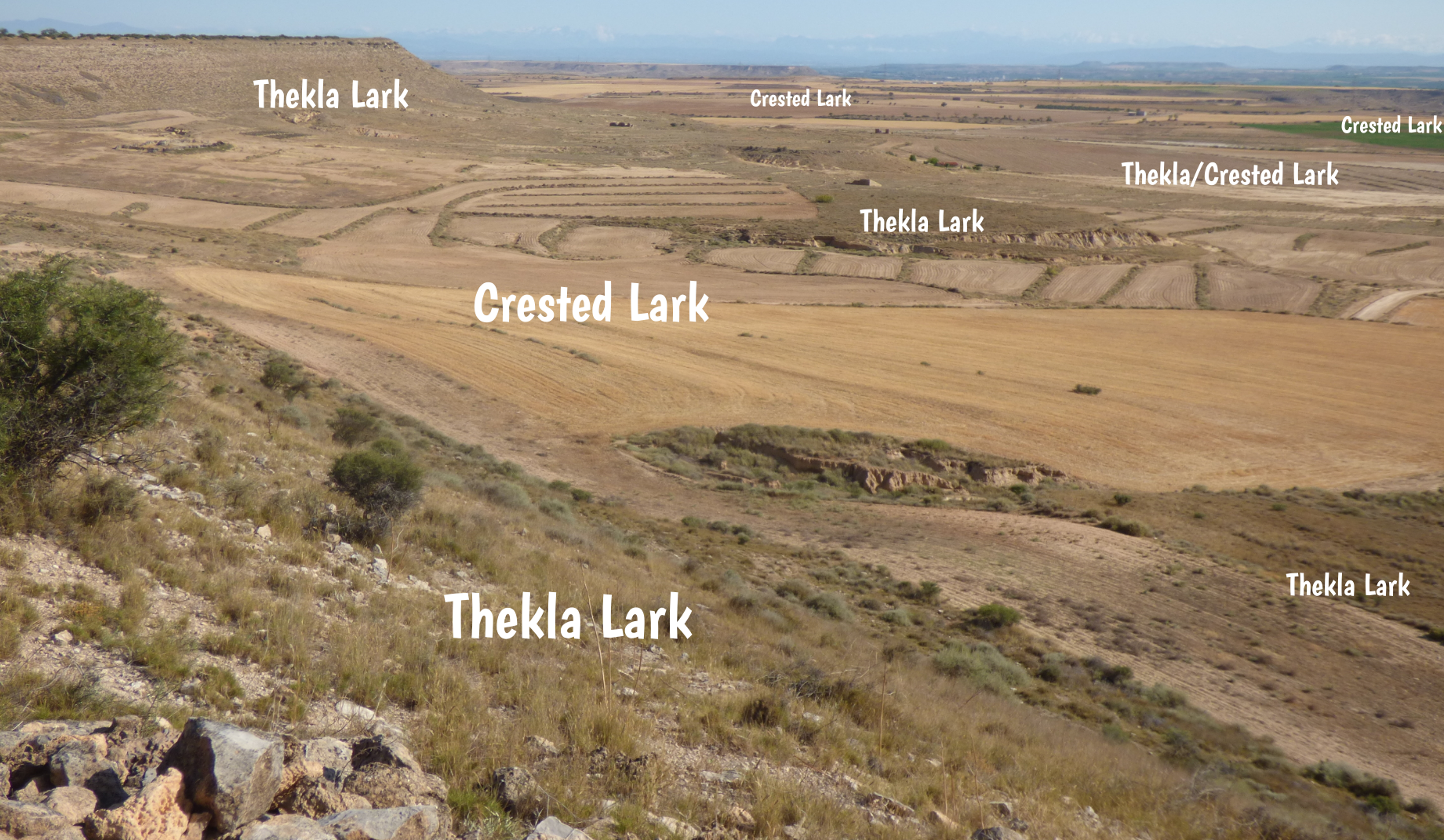
Last but not the least, both species are resident. However, they tend to do small winter movements. Crested Larks tend to associate with large mixed flocks of other Larks and Finches in winter, while Thekla Lark is less likely to do so.
As a general conclusion, the best way to tell apart Crested from Thekla Larks is to take in count different aspects including face patterns and general coloration. Tail & wing lenght are also important, but probably some experience is required for a correct identification if only using this features. Underwing and tail pattern are the best way to tell them apart, since they are constant in all ages and plomages, but many times to see these details is not easy in the field. Habitat selection can be also used, but it is necessary to be aware on how close both species can be found in the field.
I hope that these tips may help you on the trikky world of larks ID. Now it is time to test your new skills in the field!
Bibliography: Demongin L. (2016) Identification Guide to Birds in the Hand. Beauregard-Vendon.


